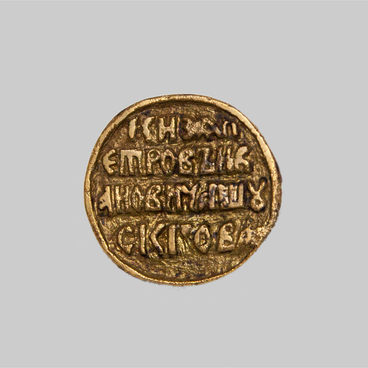One of the main reforms of Emperor Peter I was the modernization of the legal system. It was during his reign when knowledge, respect and compliance with the law were placed among the top priority issues. In connection with this, the Decree on the preservation of civil rights of 1722 established that ‘mirror armours’ be mandatory installed in all public places of the state (public administration bodies ‘starting from the Senate even to the very last places of judgment’) — daily reminders that, since crossing the threshold of the chamber, the official was subject to the strict rules of Peter’s decrees. The document ordered “to have a mirror armour on the table before the eyes of the judges”.
The European tradition used the term “mirror armour” in the name of educational, didactic, legal, instructive treatises, as well as encyclopedias. In the Russian Empire, this concept has acquired the meaning of the symbol of justice. The mirror armour was a three-sided truncated pyramid topped with a double-headed eagle. Texts of three decrees were printed on each side: from April 17, 1722 “On the preservation of civil rights”, from January 21, 1724 “On the observance of decency in all judicial places” and from January 22, 1724 “On the Importance of State Charters”.
Despite the fact that all civil servants of the Russian Empire knew the laws written on the edges of the mirror armour by heart, the decree on the presence of this attribute of the management system in public places was strictly observed until 1917. There was a fine for violating the decree. In all state institutions, this was a kind of “window to an official”s soul”, a kind of swearing in. It was assumed that before deciding cases, a servant of the law had to look in the mirror armour as in a mirror, to bring their thoughts in accordance with their conscience and act for the good of the state.
It is noteworthy that in the Decree of 1722, which had been generally placed in mirrors for two centuries, as a punishment for violating laws, regulations and civil rights, the death of the first Siberian Governor, Matvey Gagarin, was cited as an example.
The European tradition used the term “mirror armour” in the name of educational, didactic, legal, instructive treatises, as well as encyclopedias. In the Russian Empire, this concept has acquired the meaning of the symbol of justice. The mirror armour was a three-sided truncated pyramid topped with a double-headed eagle. Texts of three decrees were printed on each side: from April 17, 1722 “On the preservation of civil rights”, from January 21, 1724 “On the observance of decency in all judicial places” and from January 22, 1724 “On the Importance of State Charters”.
Despite the fact that all civil servants of the Russian Empire knew the laws written on the edges of the mirror armour by heart, the decree on the presence of this attribute of the management system in public places was strictly observed until 1917. There was a fine for violating the decree. In all state institutions, this was a kind of “window to an official”s soul”, a kind of swearing in. It was assumed that before deciding cases, a servant of the law had to look in the mirror armour as in a mirror, to bring their thoughts in accordance with their conscience and act for the good of the state.
It is noteworthy that in the Decree of 1722, which had been generally placed in mirrors for two centuries, as a punishment for violating laws, regulations and civil rights, the death of the first Siberian Governor, Matvey Gagarin, was cited as an example.



